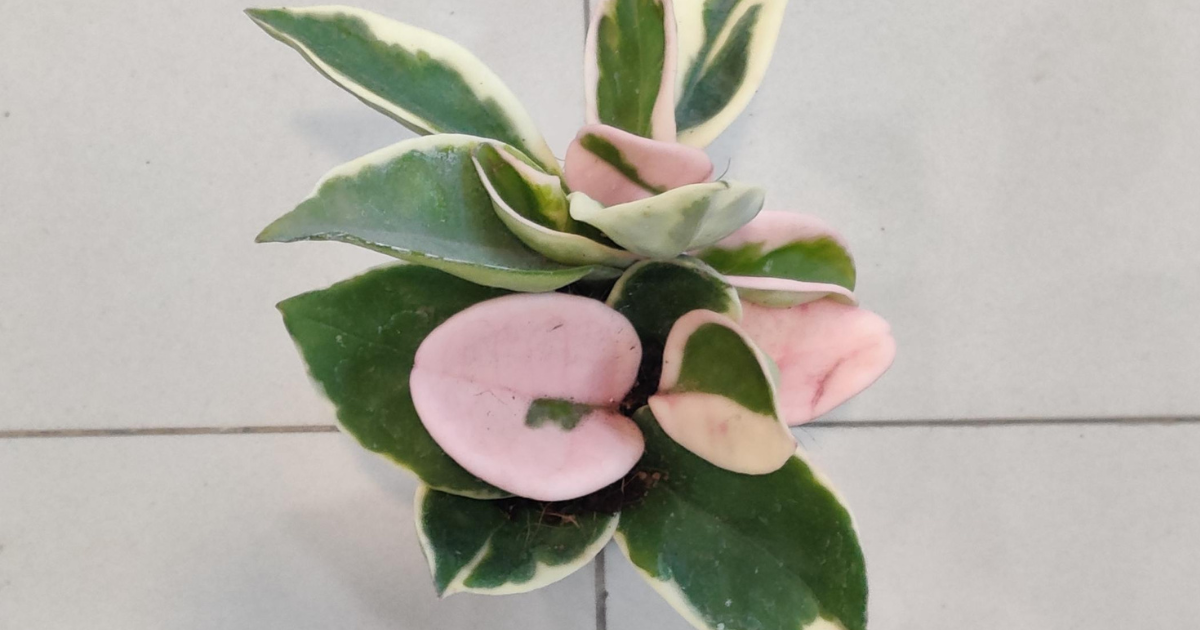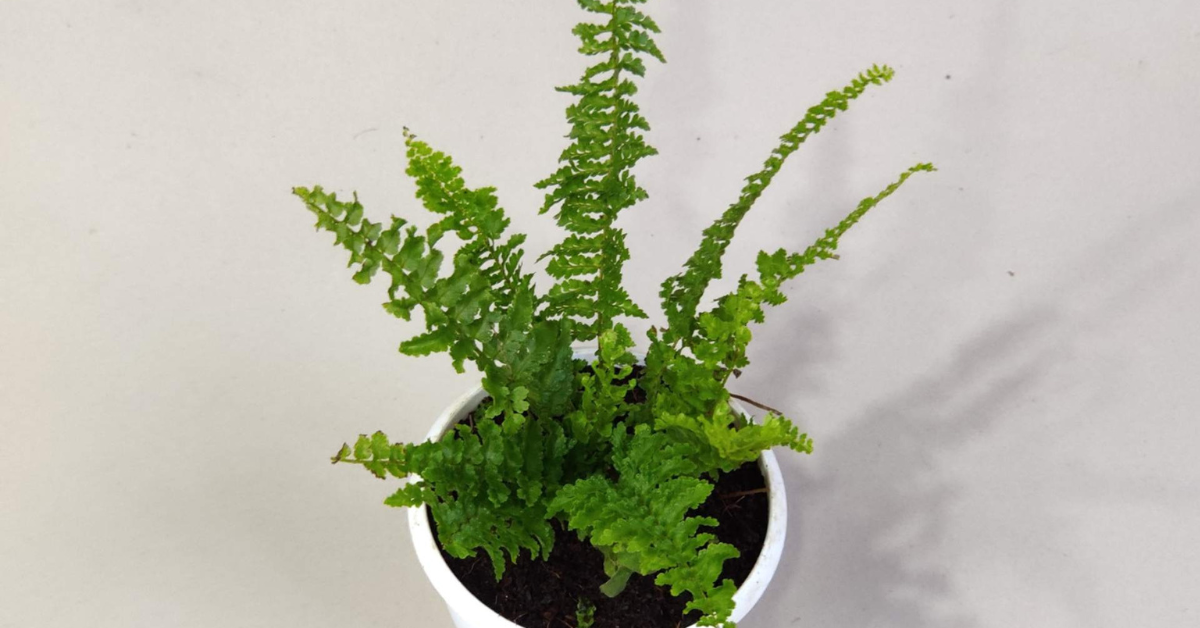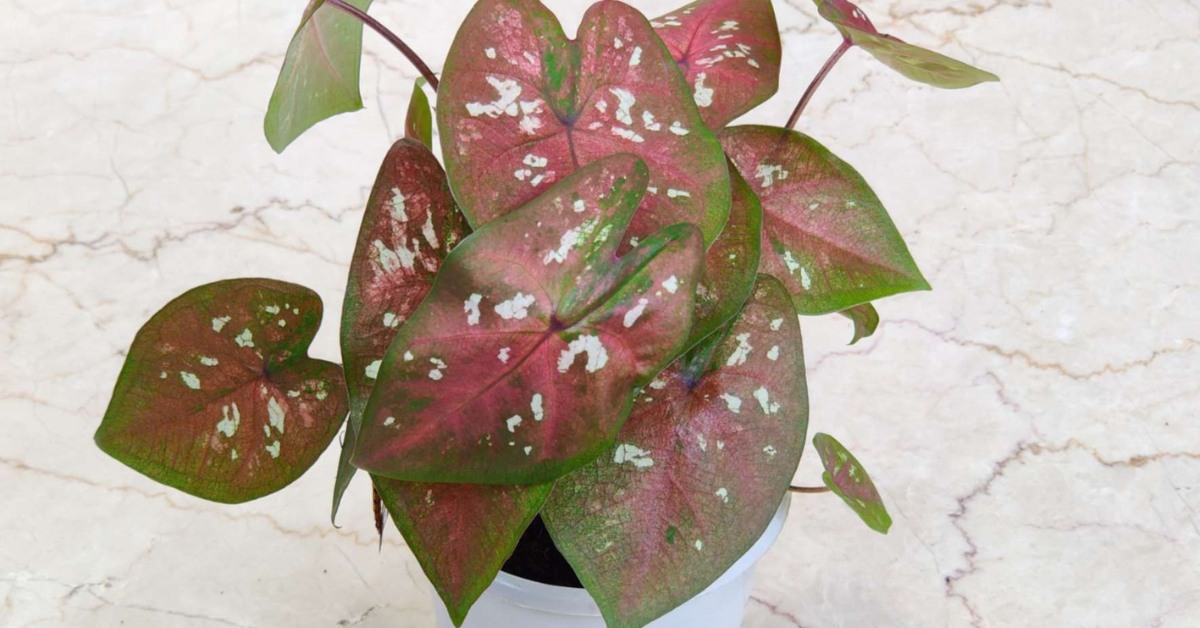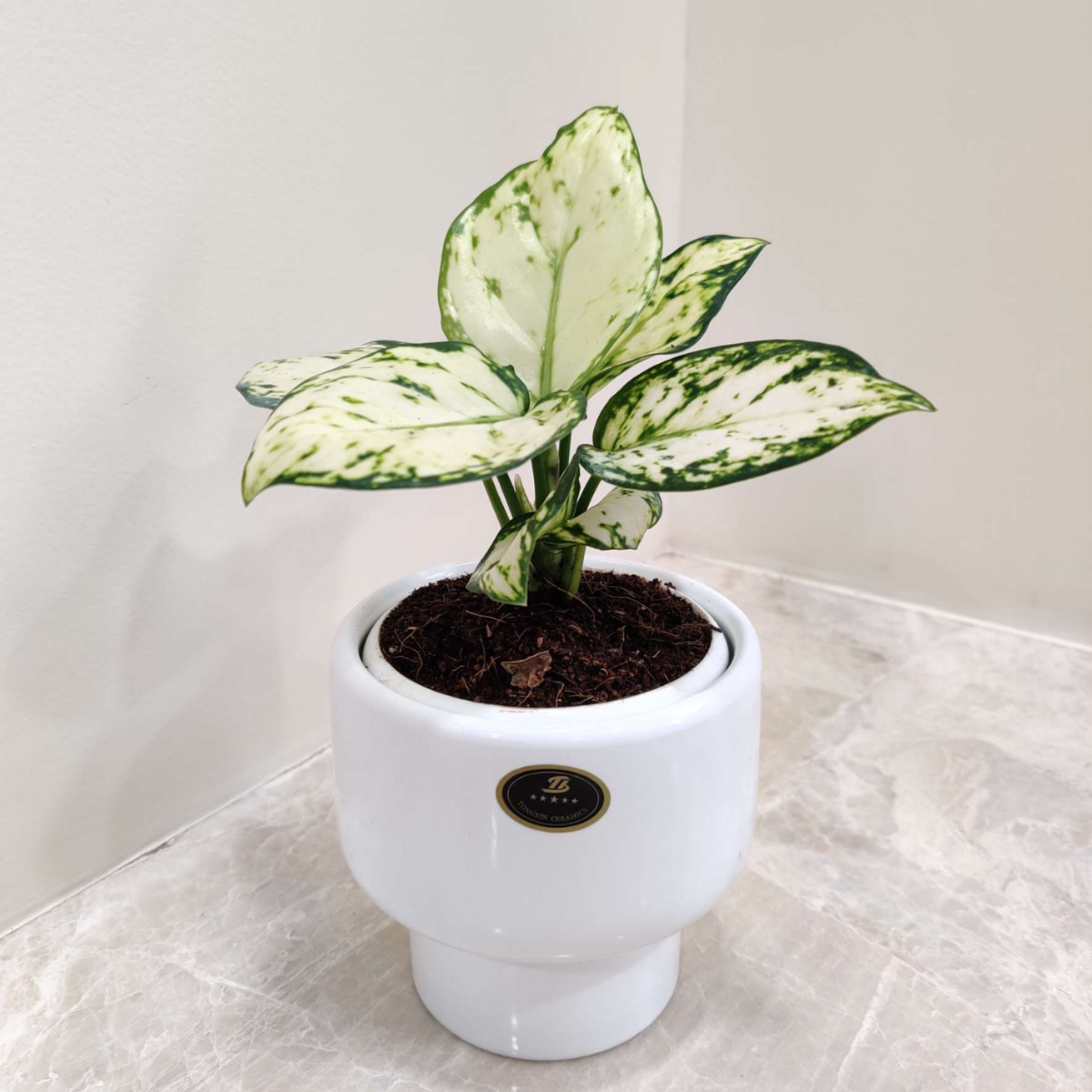Houseplants are more than just home décor—they’re living companions that purify the air, reduce stress, and add natural beauty to any space. Among the many popular indoor plants, the Dracaena plant shines as a favorite choice for both beginners and seasoned plant parents. With its sleek foliage, low-maintenance care needs, and powerful air-purifying qualities, Dracaena has earned its place as a staple in homes and offices around the world.
Yet, even hardy houseplants like Dracaena can run into problems. One of the most common concerns plant owners face is brown spots on Dracaena leaves. If you’ve noticed crispy tips, discolored patches, or yellow-edged brown spots on your plant, don’t worry—these issues are typically easy to fix once you understand the cause.
In this complete Dracaena care and troubleshooting guide, we’ll walk you through everything you need to know, including:
- The main causes of brown spots on Dracaena leaves
- How to identify and diagnose symptoms quickly
- Step-by-step treatment solutions for each problem
- Preventive plant care routines to keep Dracaena thriving long-term
- A detailed FAQ section answering the most common Dracaena care questions
By the end, you’ll have a clear, practical roadmap to restore your Dracaena’s health and enjoy a lush, vibrant plant that enhances your living space.
Understanding Dracaena: A Low-Maintenance Favorite
The Dracaena plant is a timeless indoor favorite, admired for its beauty, resilience, and adaptability. Belonging to a diverse genus of over 200 tropical plant species, Dracaenas are native to Africa, Asia, and nearby regions, where they thrive in warm, humid environments. These hardy plants have successfully adapted to indoor living, making them a top choice for homes, apartments, and offices.
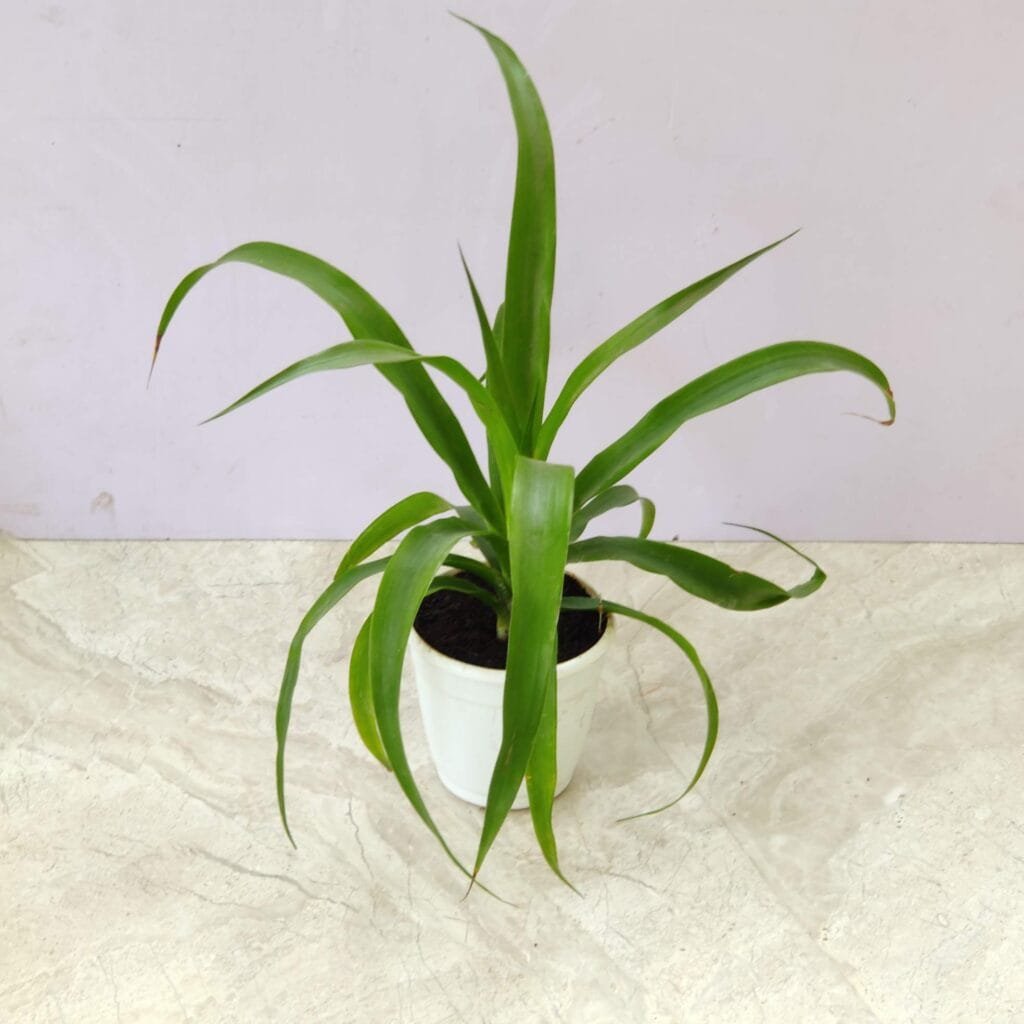
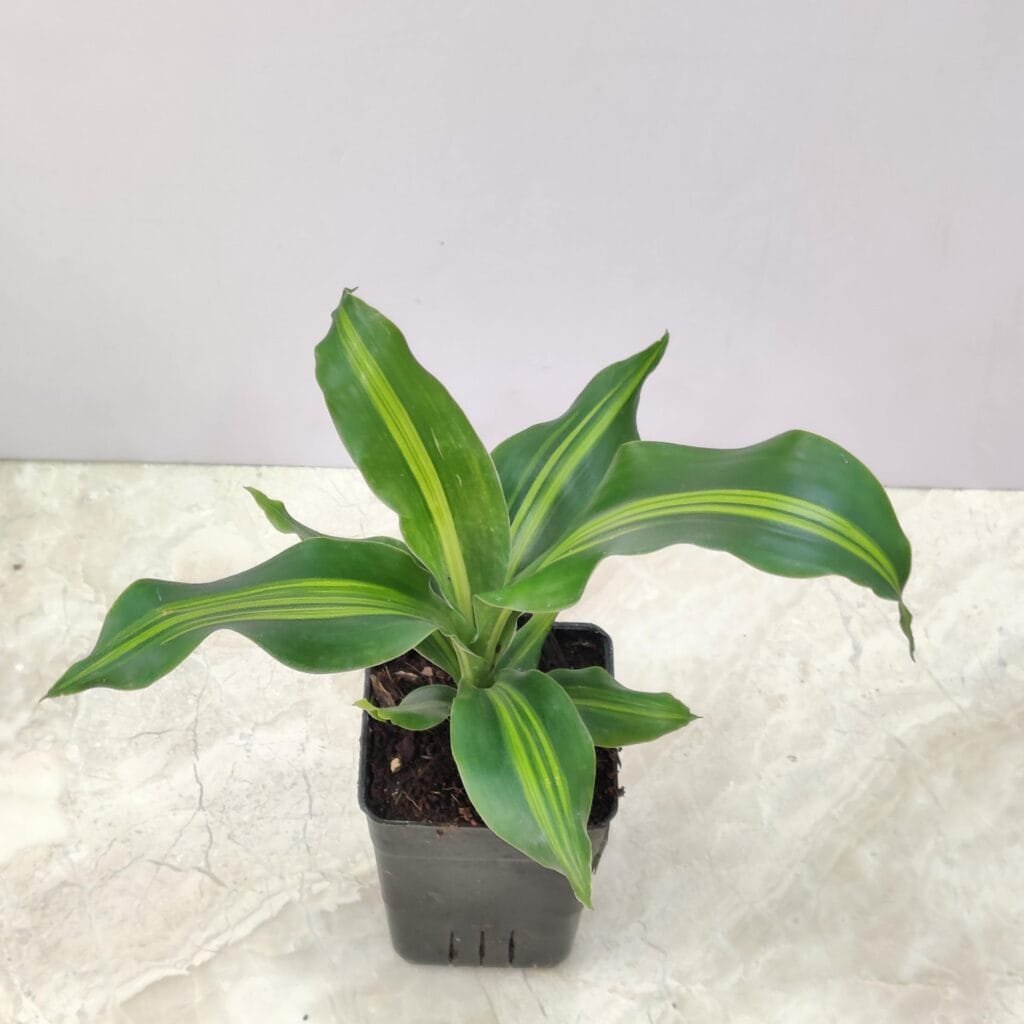
Popular Varieties of Dracaena
While there are many types of Dracaena, a few varieties have become household staples:
- Dracaena marginata (Dragon Tree): Known for its long, narrow, spiky leaves edged with striking red or burgundy tones. Its tree-like growth habit makes it a statement plant in modern interiors.
- Dracaena fragrans (Corn Plant): Recognizable by its broad, arching leaves with green-and-yellow stripes, this variety is often used as a floor plant to add lush greenery to empty corners.
- Dracaena compacta: A more compact version with tightly packed, glossy green leaves. Perfect for smaller spaces, desks, or tabletops, it adds sophistication without demanding much care.
Each variety has its own charm, but all share the same easygoing nature that makes them widely loved.
Why Plant Lovers Adore Dracaena
- Air-Purifying Qualities
The Dracaena is more than just a pretty plant—it’s a natural air purifier. Studies, including NASA’s Clean Air Study, found that Dracaena varieties effectively filter harmful indoor toxins such as formaldehyde, benzene, trichloroethylene, and xylene. Having one in your home doesn’t just add greenery—it actively improves your air quality. - Stylish Appearance
With its tall, structured growth and bold foliage, Dracaena brings an architectural element to any space. Whether you want a floor-standing statement plant or a small tabletop accent, there’s a Dracaena variety to match your style. Its sleek lines and vibrant greens make it an ideal fit for modern, minimalist, and contemporary interiors. - Beginner-Friendly
Dracaenas are among the most low-maintenance houseplants, making them ideal for beginners. They can tolerate low to medium light, adapt to different watering schedules, and don’t require frequent repotting. Unlike finicky plants, Dracaenas forgive occasional neglect, making them a reliable choice for busy plant parents.
The Reality: No Plant Is Perfect
Even though Dracaenas are hardy, they’re not entirely immune to issues. One of the most common challenges plant owners face is the appearance of brown spots on Dracaena leaves. These blemishes signal that something in the plant’s environment—water, light, humidity, or even disease—needs attention. While the problem may look alarming at first, it’s usually easy to resolve with the right care.
Understanding the root causes of brown spots and how to treat them is the key to keeping your Dracaena healthy, vibrant, and thriving for years to come.
Symptoms of Dracaena Distress
Just like people, plants show signs when they’re unwell. To successfully treat Dracaena problems, you first need to recognize the early warning signs. Spotting these symptoms on your plant helps you identify the root cause and take corrective action before the issue worsens. Here are the most common symptoms of a Dracaena in distress:
1. Brown, Dry Spots on Leaves
One of the first red flags is the appearance of brown spots on Dracaena leaves. These may be scattered across the surface or concentrated in specific areas. In most cases, they indicate watering issues—either underwatering or sensitivity to chemicals in tap water. Left untreated, these spots can spread and ruin the plant’s appearance.
2. Crispy or Browning Leaf Tips
When the tips of Dracaena leaves turn brown and crispy, it’s often a sign of low humidity or inconsistent watering. Since Dracaenas are tropical plants, they thrive in moderate humidity levels. Dry indoor air, especially in winter, causes moisture loss from the leaf edges, resulting in a crispy, burnt look.
3. Yellow-Edged Brown Spots (Leaf Spot Disease)
If the brown spots are surrounded by a yellow halo, this typically points to Leaf Spot Disease, a common fungal or bacterial infection. The spots often start small but may grow larger or merge into bigger patches if the infection spreads. Without treatment, it can weaken your Dracaena significantly.
4. White Crusty Deposits on the Pot or Soil Surface
If you notice white crusty deposits forming on the pot edges or the surface of the soil, it’s a clear sign of salt buildup. This happens when chemicals, minerals, and salts from tap water or over-fertilization accumulate in the soil. Over time, this buildup can damage roots and cause leaf burn or brown edges on Dracaena leaves.
5. Drooping or Curling Leaves
Healthy Dracaena leaves stand tall and slightly arch outward. But when your plant is stressed, you may notice drooping, curling, or limp leaves. This is often linked to environmental stress such as:
- Too little or too much light
- Prolonged underwatering or overwatering
- Temperature fluctuations or cold drafts
These symptoms are your Dracaena’s way of signaling discomfort in its growing environment.
Why Identifying Symptoms Early Matters
Catching these signs early makes a big difference in Dracaena plant care. For example, crispy leaf tips can often be corrected by improving humidity, while salt buildup can be fixed by flushing the soil with distilled water. By narrowing down the problem through symptoms, you can apply the right solution quickly and prevent further damage.
Common Causes of Brown Spots on Dracaena (and How to Fix Them)
1. Inconsistent Watering
Dracaenas don’t like extremes. Letting the soil dry out too much between waterings stresses the plant, leading to brown tips and edges.
How to Fix It:
- Test soil moisture before watering by inserting your finger 1–2 inches deep.
- Water when about 75% of the soil volume is dry.
- Avoid letting the plant sit in standing water to prevent root rot.
2. Tap Water Sensitivity
Dracaenas are highly sensitive to chemicals like chlorine and fluoride found in tap water. Over time, these chemicals accumulate in the soil, burning leaf tips and edges.
How to Fix It:
- Fill a container with tap water and let it sit uncovered for 24 hours before using.
- Use distilled or rainwater as a safer alternative.
- If you see white deposits on the outside of the pot, flush the soil monthly with distilled water to remove excess salts.
3. Low Humidity
Dracaenas are tropical plants that thrive in moderate to high humidity. Indoor environments, especially in winter, are often too dry. This leads to crispy, brown leaf tips.
How to Fix It:
- Mist leaves 2–3 times a week with lukewarm water.
- Use a humidifier to maintain 40–60% humidity indoors.
- Place the plant on a pebble tray filled with water or group it with other plants to create a natural microclimate.
4. Leaf Spot Disease (Fungal or Bacterial Infection)
If brown spots are surrounded by yellow halos, your Dracaena may have Leaf Spot Disease, caused by fungi or bacteria.
Symptoms:
- Small, irregularly shaped brown spots trimmed in yellow
- Spots may expand or merge over time
- Soft, mushy areas in advanced cases
How to Fix It:
- Remove affected leaves immediately.
- Isolate the plant from others to prevent spreading.
- Spray with a homemade remedy:
- Mix 1 tablespoon baking soda and 1 teaspoon mineral oil in a spray bottle of water.
- Shake well and spray all infected areas.
- Improve air circulation around the plant.
5. Light Stress
Too much direct sunlight scorches leaves, while too little weakens plants, making them more vulnerable to disease.
How to Fix It:
- Place your Dracaena in bright, indirect light.
- Avoid intense afternoon sun, especially in south-facing windows.
- Rotate the pot weekly for even light exposure.
Essential Maintenance: Removing Damaged Leaves
Trimming damaged leaves not only improves appearance but also prevents further spread of disease.
Steps for Proper Removal:
- Use clean, sharp scissors or pruning shears.
- For brown tips, cut only the damaged part, leaving a thin brown margin.
- For fully brown leaves, gently pull from the base. If it doesn’t detach, snip it off at the stem.
This simple practice encourages healthy new growth.
Prevention: Keeping Dracaena Healthy
Prevention is better than cure. Here’s how to protect your Dracaena long-term:
- Consistent Watering – Check soil moisture before watering.
- Safe Watering Practices – Use filtered, distilled, or rainwater.
- Proper Humidity – Mist regularly or use humidifiers.
- Balanced Lighting – Bright, indirect light is ideal.
- Regular Inspections – Check for pests, salt buildup, or leaf changes weekly.
- Seasonal Adjustments – Water less in winter, fertilize lightly in spring/summer.
Treatment and Recovery Timeline
With the right care, your Dracaena will recover in 4–6 weeks. You’ll notice:
- Healthy new leaves growing without spots
- Improved vibrancy and leaf strength
- Gradual decline of stress symptoms
Older spotted leaves won’t heal but can be removed as new growth appears.
Advanced Care Tips
- Repotting: Dracaenas prefer to be slightly root-bound. Repot only when roots outgrow the pot.
- Fertilization: Feed monthly in spring and summer with diluted liquid fertilizer. Skip in fall and winter.
- Pest Control: Watch for mealybugs and spider mites, which attack stressed plants.
- Winter Care: Mist more often when indoor heating dries the air.
When to Seek Help
If spots continue spreading despite treatment, your plant may be facing root rot or systemic disease. In such cases:
- Try propagation from healthy cuttings.
Final Thoughts
Caring for a Dracaena plant doesn’t have to feel overwhelming. While brown spots on Dracaena leaves may look alarming at first, they’re simply your plant’s way of signaling that something in its care routine needs adjusting. Whether the cause is watering issues, low humidity, light stress, or a fungal infection, the good news is that most problems are easy to diagnose and fix with a little attention.
By observing your plant’s symptoms closely and applying the right care—such as using distilled water, maintaining proper humidity, trimming damaged leaves, and providing bright, indirect light—you can restore your Dracaena’s health and vibrancy. Over time, you’ll notice fresh, green, spotless leaves that prove your efforts are paying off.
Remember, no plant is completely problem-free, but Dracaena is among the most forgiving, low-maintenance houseplants you can own. With the right preventive care and a little patience, your Dracaena will continue to reward you with cleaner air, lush foliage, and timeless beauty for years to come.
And if you ever feel stuck, Our Team and plant care resources are always there to guide you, ensuring you never have to guess when it comes to keeping your plants thriving.
A healthy Dracaena is more than just greenery—it’s a natural air purifier, a stress reliever, and a statement of style in your living space.
FAQs
1. What causes brown spots on Dracaena?
The main culprits are inconsistent watering, water sensitivity, low humidity, fungal infections, and light stress.
2. How can I tell if my Dracaena is underwatered?
Look for brown, crispy tips, dry soil pulling from the pot edges, and wilted leaves.
3. Can tap water harm Dracaena plants?
Yes. Chemicals like chlorine and fluoride can burn leaves. Use distilled, filtered, or rainwater.
4. How do I treat Leaf Spot Disease?
Remove affected leaves, isolate the plant, and spray with a baking soda + mineral oil solution.
5. How long does it take for Dracaena to recover?
With proper care, new growth appears healthy in 4–6 weeks.
6. Should I remove all brown leaves?
Yes. Trim damaged tips or remove fully brown leaves to improve recovery and appearance.
7. How much light does Dracaena need?
It thrives in bright, indirect light. Avoid harsh direct sunlight.
8. Can low humidity cause brown tips?
Absolutely. Dracaenas prefer 40–60% humidity. Dry air causes leaf tips to brown.

Discover the beauty of Dracaena—shop our complete Dracaena plant collection today and bring home greenery that’s stylish, low-maintenance, and air-purifying.




